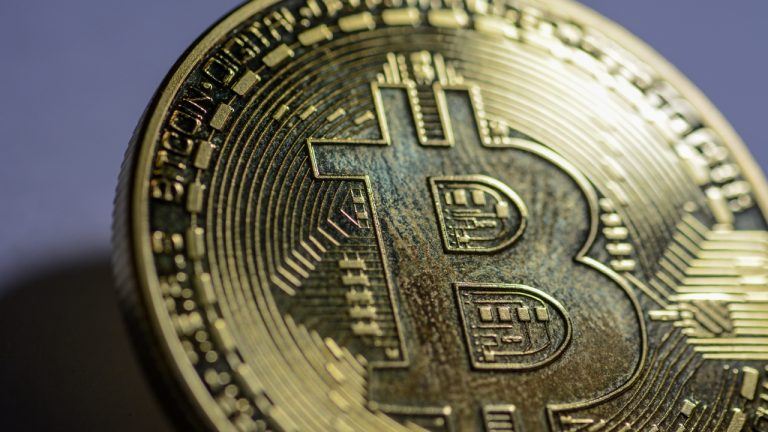 The price of ether has been on a downward spiral since December, and this new non-profit was launched to solve that problem. Ether Guild Launches: New Initiative Aims to Boost the Cryptocurrency’s Value The Ethereum community has launched a new non-profit organization dubbed Ether Guild to help bolster the value of ether (ETH) whose underperformance […]
The price of ether has been on a downward spiral since December, and this new non-profit was launched to solve that problem. Ether Guild Launches: New Initiative Aims to Boost the Cryptocurrency’s Value The Ethereum community has launched a new non-profit organization dubbed Ether Guild to help bolster the value of ether (ETH) whose underperformance […]

USDC’s massive growth in 2024 marked the stablecoin’s steady recovery following a 45% market cap drop associated with the Silicon Valley Bank collapse in 2023.
Circle’s USD Coin stablecoin outpaced all other stablecoins in terms of market capitalization growth in 2024, after a decline in 2023.
The circulation of USD Coin (USDC) grew 78% year-over-year, outpacing the growth rate of all global stablecoins, Circle said in its third annual State of the USDC Economy Report released on Jan. 14.
“The growth of USDC in 2024 can be attributed to a combination of factors: the maturing regulatory clarity across major markets, the scalability of blockchain infrastructure, and our relentless focus on trust, transparency and utility,” a spokesperson for Circle told Cointelegraph.
 In the midst of a more optimistic crypto market, both bitcoin and ethereum have enjoyed steady growth, climbing by 3.13% and 3.61%, respectively, over the past week. Additionally, several other digital currencies experienced even more significant increases, with spx6900 (SPX) stealing the spotlight by skyrocketing 107.2%, making it the standout performer of the week. Crypto […]
In the midst of a more optimistic crypto market, both bitcoin and ethereum have enjoyed steady growth, climbing by 3.13% and 3.61%, respectively, over the past week. Additionally, several other digital currencies experienced even more significant increases, with spx6900 (SPX) stealing the spotlight by skyrocketing 107.2%, making it the standout performer of the week. Crypto […] In the past week, meme coins have been on a roll, with shiba inu (SHIB) leading the top five pack, gaining 35.5% against the U.S. dollar over seven days. However, the real standout was MOODENG, the meme token inspired by a baby pygmy hippopotamus from Thailand. The newly launched Solana-based coin hit its all-time high […]
In the past week, meme coins have been on a roll, with shiba inu (SHIB) leading the top five pack, gaining 35.5% against the U.S. dollar over seven days. However, the real standout was MOODENG, the meme token inspired by a baby pygmy hippopotamus from Thailand. The newly launched Solana-based coin hit its all-time high […]

The ten most valuable tech firms in the world are all involved in developing technology for the robotics industry.
The next big thing in the technology industry appears to be consumer robotics and there could be massive implications for both Main Street and Wall Street.
An analysis of the top ten tech firms in the world by market capitalization, their 2024 performance to-date, and what we’ve been able to glean about their current budgets indicates that big tech is ready to move beyond chatbots.
There are currently countless robots in the world. They’re used to build cars, stitch clothing, and even handle nuclear materials. But these specialized machines are purpose-built to perform specific tasks and typically not available or even useful to the average person.
 As of August 19, 2024, bitcoin is trading at $58,061, with a 24-hour intraday range between $57,918 and $60,191. The crypto asset saw a trading volume of $20.7 billion and maintains a market capitalization of $1.14 trillion. Multiple timeframes reveal a sustained downtrend, with key resistance levels holding firm and technical indicators signaling weak buying […]
As of August 19, 2024, bitcoin is trading at $58,061, with a 24-hour intraday range between $57,918 and $60,191. The crypto asset saw a trading volume of $20.7 billion and maintains a market capitalization of $1.14 trillion. Multiple timeframes reveal a sustained downtrend, with key resistance levels holding firm and technical indicators signaling weak buying […] According to statistics, Paypal’s PYUSD stablecoin has surpassed Tron’s stablecoin USDD becoming the sixth largest dollar-pegged token by market capitalization. Over the past ten days, PYUSD’s supply has swelled by $140.9 million. Paypal’s PYUSD Nears $1B Milestone The stablecoin asset issued by Paypal is now the sixth largest stablecoin asset today after growing significantly over […]
According to statistics, Paypal’s PYUSD stablecoin has surpassed Tron’s stablecoin USDD becoming the sixth largest dollar-pegged token by market capitalization. Over the past ten days, PYUSD’s supply has swelled by $140.9 million. Paypal’s PYUSD Nears $1B Milestone The stablecoin asset issued by Paypal is now the sixth largest stablecoin asset today after growing significantly over […] Bitcoin’s price on August 12, 2024, stands at $59,777, with intraday 24-hour prices ranging between $57,814 and $61,054. The cryptocurrency’s market capitalization is $1.16 trillion, supported by a 24-hour trade volume of $29.81 billion. As bitcoin navigates this challenging environment, technical indicators reveal continued bearish momentum, testing the resolve of bullish investors. Bitcoin The 1-hour […]
Bitcoin’s price on August 12, 2024, stands at $59,777, with intraday 24-hour prices ranging between $57,814 and $61,054. The cryptocurrency’s market capitalization is $1.16 trillion, supported by a 24-hour trade volume of $29.81 billion. As bitcoin navigates this challenging environment, technical indicators reveal continued bearish momentum, testing the resolve of bullish investors. Bitcoin The 1-hour […]

Nvidia’s shrinking market cap could signal a shift in the generative AI developer’s market.
Apple had the same choices as any other technology company with money to burn when it came to training its artificial intelligence models. It could have used its own chips, conducted training via cloud infrastructure, or gone the popular route and just bought billions of dollars' worth of Nvidia chips. Instead, it made a deal with the company that owns Google.
Apple has been accused of being late to the artificial intelligence party. While its peers were busy pivoting to generative AI and pouring billions of dollars into training chips and cloud services, Apple’s public-facing image focused on iPhone sales and “spatial computing.”
This led analysts and pundits to worry over whether the house that Steve Jobs built was falling behind its closest competitors. Then, in June of 2024, the market itself seemed to confirm those fears when Nvidia passed up Google, Apple, and Microsoft to become the most valuable company in the world.
 The largest cryptocurrency exchange by trading volume, Binance, is set to introduce toncoin (TON) trading pairs on Aug. 8, leading to a more than 10% increase in TON’s value against the U.S. dollar. Currently, TON is trading within a range of $5.36 to $6.41 over the past day, making it the eighth largest crypto asset […]
The largest cryptocurrency exchange by trading volume, Binance, is set to introduce toncoin (TON) trading pairs on Aug. 8, leading to a more than 10% increase in TON’s value against the U.S. dollar. Currently, TON is trading within a range of $5.36 to $6.41 over the past day, making it the eighth largest crypto asset […]